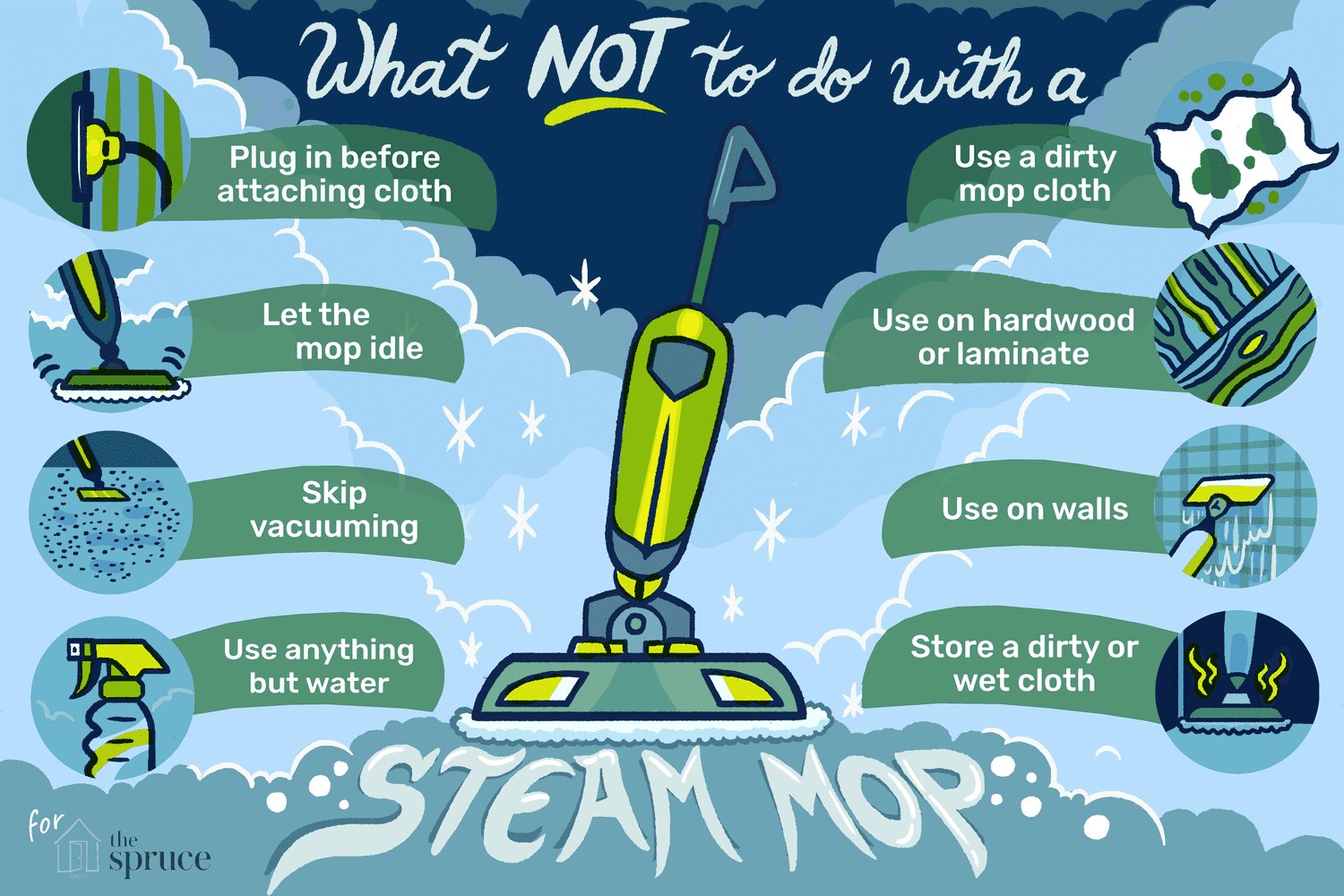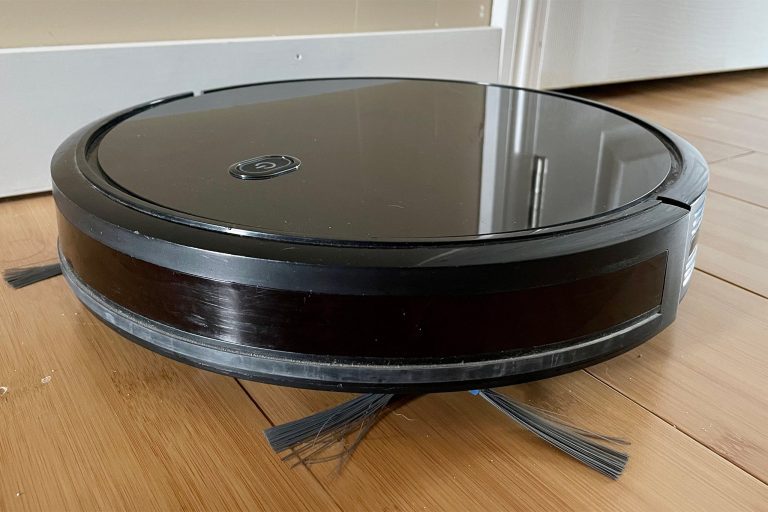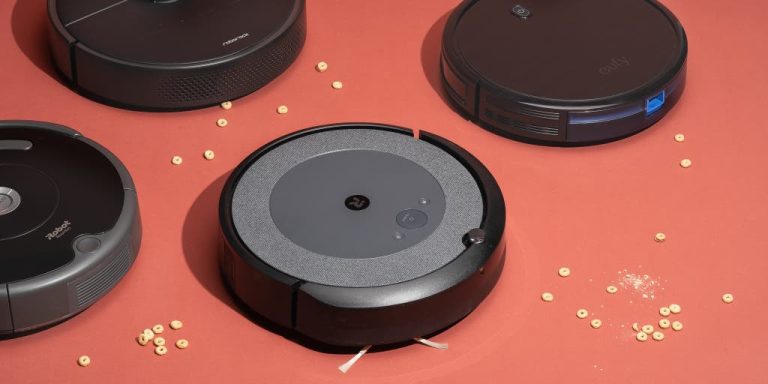What Can You Put in Steam Mop?

Only distilled water or water specifically recommended by the manufacturer can be put in a steam mop. Using other solutions may damage the mop or void the warranty.
Efficient and eco-friendly, steam mops have revolutionized home cleaning by using heated water vapor to tackle dirt on various surfaces. They harness the power of steam to clean floors without the need for harsh chemicals, ensuring a family- and pet-safe environment.
Adopting a steam mop for your cleaning routine can not only decrease the amount of time you spend on chores but also provide a deeper clean. Remember that while some models offer a compartment for detergent or cleaning solutions, it is crucial to consult your device’s manual before adding anything other than water. By using the correct substance in your mop, you keep your cleaning effective and your equipment in good condition.
The Fundamentals Of Steam Mops
Understanding how a steam mop works is key to using it safely and effectively. Steam mops produce steam that cleans and disinfects floors. The steam loosens dirt and grime, which the mop pad then wipes away. Before use, ensure the mop’s water tank is filled with clean water. Some models might allow a vinegar and water solution for extra cleaning power but never add chemicals or soaps. These substances can damage the machine or leave harmful residues.
Safety is crucial before turning on your steam mop. Always use distilled water to prevent mineral build-up inside the mop. Check the manufacturer’s guide for the correct water type. Make sure to select the right mop pad for your floor type and replace it regularly to avoid spreading dirt. Never leave the steam mop on one spot for too long as it can damage the floor.
Suitable Liquids For Steam Mops
Steam mops are a popular choice for cleaning various types of floors securely. Choosing the right liquid is essential to avoid damage to your mop. Standard tap water can contain minerals that build up in the mop. This can lead to clogs or damage.
Distilled water is the safest bet for most steam mops. It’s free from minerals found in tap water. This means no hard water deposits will form in your machine. Demineralized water is also a good choice. It lacks minerals that may harm your machine. Look into your mop’s manual to know the best option.
| Water Type | Pros | Cons |
|---|---|---|
| Distilled Water | Prevents mineral buildup, promotes longevity of the mop | Costs a bit more than tap water |
| Tap Water | Easily accessible and inexpensive | May contain minerals that could clog or damage the mop |
| Demineralized Water | Safe for mops, mineral-free | Can be more expensive than tap water |
Remember to always check your steam mop’s guide. It helps to know the best liquid to use. Your mop stays safe and works well for a long time.
Commercial Cleaning Solutions And Steam Mops
Choosing the right cleaning solution for steam mops is crucial. Specially-formulated solutions are designed to work with the heat. They ensure effective cleaning without damaging your machine. Regular floor cleaners may contain substances that damage the internal parts of your steam mop. Using only manufacturer-recommended solutions is safe.
Unapproved solutions carry risks. They can cause corrosion or clogging and void warranties. There may also be a negative impact on surfaces cleaned. Check the manual of your steam mop to confirm compatible products. Distilled water is often a recommended choice. It is gentle on the machine and can be a safe bet for maintenance.

Credit: us.eufy.com
Natural Alternatives For Enhanced Cleaning
Natural alternatives boost steam mop cleaning effectiveness. Using white vinegar in your steam mop can dissolve grime and sanitize floors. Just a small amount with the water works wonders. It’s a safe, eco-friendly choice for most flooring types.
Mixing in essential oils like lavender or lemon adds a fresh scent to your space. A few drops go a long way. Your home will smell clean and fragrant post-mopping. Always check your steam mop’s manual first to avoid damage.
Items To Avoid In Your Steam Mop
Bleach in your steam mop is a no-go. It can cause serious damage to the machine. It’s also unsafe for your health. Breathing in the fumes from the hot bleach can harm your lungs. It’s crucial to stick to just water in your steam mop to avoid these risks.
Detergents might seem helpful, but they aren’t. Your steam mop isn’t built for them. Adding soaps or other cleaners can clog the system. This may lead to breakdowns or a shorter life for your mop. To ensure your mop works well, refrain from adding detergents.

Credit: www.youtube.com
Maintaining Your Steam Mop For Optimal Performance
Maintain your steam mop with care to ensure it works well. Clean it regularly, following the manufacturer’s instructions. Use distilled or demineralized water to prevent mineral buildup. Avoid harsh chemicals, as they can damage the mop.
Replace cleaning pads and filters as recommended. Typically, pads should be washed after each use. Check the filters every few months. If a filter looks dirty or clogged, get a new one. Fresh pads and filters help keep your steam mop in top shape.
| Item | Frequency of Replacement |
|---|---|
| Microfiber Pads | After each use (wash) or when worn out |
| Filters | Every few months or when visibly dirty |
:max_bytes(150000):strip_icc()/spr-primary-steam-mops-dburreson-001-ccb37e54185e4ec2b9190aad3a2e660c.jpg)
Credit: www.thespruce.com
Conclusion
Harnessing the power of your steam mop requires the right ingredients. Stick to distilled water or manufacturer-approved solutions for optimal performance and longevity. Experimenting with unapproved additives could lead to damage. Keep your floors sparkling and your steam mop running smoothly by making smart, informed choices on what to fill it with.


